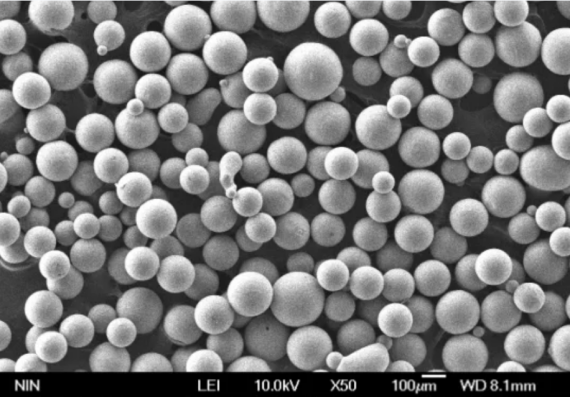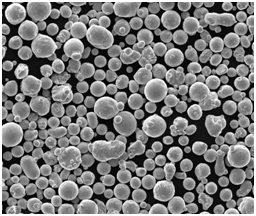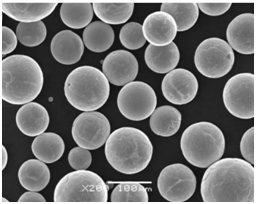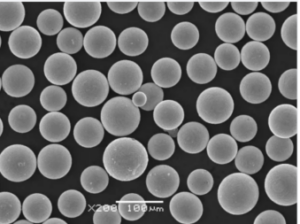Overview of REP Powders
Metal powders are the backbone of modern manufacturing, especially in industries where precision and quality are paramount. Among these, REP (Rapid Engineering Powder) powders stand out due to their exceptional properties and versatile applications. These powders, often used in additive manufacturing and powder metallurgy, come in various compositions and specifications, each tailored for specific industrial needs. But what makes REP powders so special? Let’s dive into their world, exploring their types, compositions, characteristics, applications, and more.

Types and Compositions of REP Powders
The variety of REP powders available is vast, each with unique properties derived from its specific composition. Here’s a detailed look at some of the prominent types:
| Type | Composition | Properties | Characteristics |
|---|---|---|---|
| Aluminum Alloy | Al, Cu, Mg, Si | Lightweight, corrosion-resistant | High strength-to-weight ratio |
| Titanium Alloy | Ti, Al, V | High strength, biocompatible | Excellent fatigue resistance |
| Stainless Steel | Fe, Cr, Ni, Mo | Corrosion-resistant, durable | High tensile strength |
| Nickel Alloy | Ni, Cr, Mo | Heat-resistant, corrosion-resistant | Excellent high-temperature performance |
| Cobalt-Chromium | Co, Cr, Mo | Wear-resistant, biocompatible | High hardness and strength |
| Copper Alloy | Cu, Zn, Sn | Conductive, corrosion-resistant | Excellent electrical and thermal conductivity |
| Iron Powder | Fe, C | Magnetic properties, durable | Cost-effective and versatile |
| Tungsten Carbide | W, C | Extremely hard, wear-resistant | High melting point, excellent abrasion resistance |
| Inconel | Ni, Cr, Fe, Nb | Oxidation-resistant, high strength | Superior performance in extreme environments |
| Tool Steel | Fe, C, Cr, Mo, V | Hard, wear-resistant | High hardness and toughness |
Each of these powders brings something unique to the table, making them suitable for different industrial applications. But what exactly are these applications?
Applications of REP Powders
REP powders find uses in a plethora of industries, thanks to their diverse properties. Here’s a breakdown of their applications:
| Industry | Applications |
|---|---|
| Aerospace | Turbine blades, structural components |
| Automotive | Engine parts, transmission components |
| Medical | Implants, surgical instruments |
| Electronics | Conductive inks, connectors |
| Oil and Gas | Drilling tools, pipelines |
| Dental | Crowns, bridges, dental implants |
| Defense | Armor, weapon components |
| Tool and Die | Molds, cutting tools |
| Energy | Power generation components, batteries |
| Consumer Goods | Jewelry, eyewear, fashion accessories |
From the high-flying aerospace industry to the precision-driven medical field, REP powders play a crucial role in enhancing performance and reliability. But how do you choose the right powder for your needs?
Specifications, Sizes, Grades, and Standards of REP Powders
Understanding the specifications and standards of REP powders is vital for making informed decisions. Here’s a detailed table:
| Type | Particle Size Range (µm) | Grades | Standards |
|---|---|---|---|
| Aluminum Alloy | 15-45, 45-106 | 2024, 6061, 7075 | ASTM B928, AMS 4286 |
| Titanium Alloy | 15-45, 45-105 | Ti-6Al-4V, Ti-5Al-2.5Sn | ASTM F2924, AMS 4999 |
| Stainless Steel | 15-45, 45-106 | 316L, 17-4PH | ASTM A564, AMS 5643 |
| Nickel Alloy | 15-45, 45-106 | Inconel 718, 625 | ASTM B637, AMS 5662 |
| Cobalt-Chromium | 15-45, 45-105 | CoCrMo | ASTM F75, ISO 5832-4 |
| Copper Alloy | 15-45, 45-106 | C11000, C93200 | ASTM B170, AMS 4500 |
| Iron Powder | 15-45, 45-106 | FC-0205, FN-0208 | MPIF Standard 35, ASTM B783 |
| Tungsten Carbide | 15-45, 45-105 | WC-6Co, WC-10Co | ASTM B777, AMS 7876 |
| Inconel | 15-45, 45-106 | 625, 718 | ASTM B443, AMS 5666 |
| Tool Steel | 15-45, 45-106 | M2, D2 | ASTM A681, AMS 6437 |
Each powder’s particle size, grade, and standard ensures it meets specific industry requirements, guaranteeing quality and performance.






Suppliers and Pricing Details of REP Powders
Finding the right supplier and understanding pricing is crucial for businesses. Here’s a look at some top suppliers and their pricing details:
| Supplier | Location | Powder Types Available | Price Range (per kg) |
|---|---|---|---|
| Praxair | USA | Aluminum, Titanium, Nickel | $50 – $200 |
| Höganäs | Sweden | Iron, Stainless Steel, Copper | $20 – $100 |
| Carpenter Technology | USA | Tool Steel, Titanium, Cobalt | $100 – $300 |
| Sandvik | Sweden | Stainless Steel, Nickel, Inconel | $80 – $250 |
| Oerlikon Metco | Switzerland | Titanium, Nickel, Aluminum | $90 – $280 |
| GKN Additive | UK | Iron, Stainless Steel, Tool Steel | $30 – $120 |
| LPW Technology | UK | Stainless Steel, Nickel, Copper | $70 – $220 |
| AP&C (GE Additive) | Canada | Titanium, Aluminum, Inconel | $100 – $350 |
| Advanced Powder & Coatings | Canada | Nickel, Inconel, Tool Steel | $80 – $300 |
| Erasteel | France | Tool Steel, Stainless Steel | $60 – $180 |
With this information, businesses can make informed decisions about their purchases, balancing quality and cost.
Comparing Pros and Cons of REP Powders
Different REP powders offer various advantages and limitations. Here’s a comparative look:
| Type | Advantages | Limitations |
|---|---|---|
| Aluminum Alloy | Lightweight, corrosion-resistant | Lower strength compared to some other alloys |
| Titanium Alloy | High strength, biocompatible | Expensive, difficult to machine |
| Stainless Steel | Durable, corrosion-resistant | Heavier than some other alloys |
| Nickel Alloy | Heat-resistant, high-temperature performance | Expensive, limited availability |
| Cobalt-Chromium | Wear-resistant, biocompatible | Expensive, difficult to process |
| Copper Alloy | Excellent conductivity, corrosion-resistant | Softer, less durable |
| Iron Powder | Cost-effective, versatile | Prone to rust without proper treatment |
| Tungsten Carbide | Extremely hard, wear-resistant | Very brittle, difficult to work with |
| Inconel | Oxidation-resistant, high strength | Very expensive, limited suppliers |
| Tool Steel | High hardness, wear-resistant | Prone to corrosion, requires heat treatment |
By weighing these pros and cons, manufacturers can select the most suitable powder for their specific needs, ensuring optimal performance and cost-efficiency.
Advantages of Using REP Powders
Why should one consider using REP powders in the first place? Let’s explore their key benefits:
- Enhanced Performance: REP powders are engineered for superior mechanical properties, enhancing the performance of the final product.
- Versatility: With a wide range of compositions, REP powders can be used in various industries, from aerospace to consumer goods.
- Precision: These powders allow for high-precision manufacturing, crucial for applications like medical implants and aerospace components.
- Efficiency: REP powders often enable faster production times and lower material wastage, contributing to cost savings and sustainability.
- Quality: Products made from REP powders exhibit consistent quality, meeting stringent industry standards and specifications.
These advantages make REP powders an attractive choice for modern manufacturing, driving innovation and efficiency.
Characteristics of REP Powders
REP powders possess unique characteristics that set them apart from other materials. Here’s a closer look:
| Characteristic | Description |
|---|---|
| Particle Size | Uniform particle size distribution ensures consistent properties and performance. |
| Flowability | Excellent flowability allows for easy handling and processing in manufacturing. |
| Purity | High purity levels minimize the risk of contamination and defects in final products. |
| Density | Optimal density provides strength and durability in manufactured components. |
| Morphology | Spherical or irregular shapes tailored for specific manufacturing processes. |
| Surface Area | Controlled surface area affects the reactivity and sintering behavior of the powder. |
Understanding these characteristics helps manufacturers choose the right REP powder for their specific applications, ensuring optimal results.

FAQ
| Question | Answer |
|---|---|
| What are REP powders used for? | REP powders are used in various industries for manufacturing high-performance components, including aerospace, automotive, medical, and more. |
| How are REP powders made? | REP powders are typically produced through atomization, where molten metal is sprayed into a fine powder. |
| What are the benefits of using REP powders? | Benefits include enhanced performance, versatility, precision, efficiency, and consistent quality. |
| How do I choose the right REP powder? | Consider the specific application, required properties, and cost to select the most suitable powder. |
| Are REP powders expensive? | Prices vary based on composition and supplier, but REP powders can be more expensive due to their superior properties. |
| Can REP powders be customized? | Yes, REP powders can be tailored to specific compositions and particle sizes to meet unique requirements. |
| What are the challenges of using REP powders? | Challenges include higher costs, processing difficulties, and ensuring consistent quality. |
| How do REP powders compare to traditional materials? | REP powders offer better performance and precision but may come at a higher cost. |
| Where can I buy REP powders? | Various suppliers worldwide offer REP powders, including Praxair, Höganäs, and Carpenter Technology. |
| What industries benefit the most from REP powders? | Aerospace, automotive, medical, and electronics industries benefit significantly from the unique properties of REP powders. |
In conclusion, REP powders are a game-changer in the world of manufacturing, offering unparalleled properties and versatility. By understanding their types, applications, and characteristics, manufacturers can harness their full potential to drive innovation and efficiency in their processes. Whether you’re in aerospace, medical, or any other industry, REP powders provide the quality and performance needed to stay ahead in today’s competitive market.

